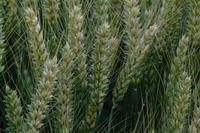NOTE: This story comes with an accompanying podcast — scroll to the bottom of the page to listen!
Despite a shifting role, the Canadian Plant Technology Agency (CPTA) remains the action agency working to ensure intellectual property is respected.
As the 1990s drew to a close, the seed industry in Canada found itself with a problem. When the country passed its first plant breeders’ rights (PBR) legislation in 1990, seed industry stakeholders felt confident that new varieties and seed products would be safe from unauthorized sale.
They were in for a rude awakening — no RCMP-style PBR police set up shop and patrol the country for infringers. The industry, it turned out, was more or less on its own.
“There was a misunderstanding that government would assist in the enforcement of plant breeders’ rights. That won’t ever happen. Responsibility for enforcement is always the responsibility of the rights holder,” says Lorne Hadley, executive director of the Canadian Plant Technology Agency (CPTA).
“No one wanted to take it on. The act of enforcement is negative by its very nature. Lawsuits are filed against seed customers and so forth, and no organization wanted to do that.”
So, there was a move to create one to take up the mantel of PBR enforcement in Canada. The CPTA was born in 1997, and Hadley has been executive director since 2001.
Unauthorized sales of protected seed varieties were rampant at the time.
“We’d see 400 ads every year in local papers where people were selling seed in violation of PBR,” Hadley says.
The CPTA model, he says, was modelled on an anti-piracy model used for software and music.
“PBR is a complex area, and there was difficulty finding focus at first. PBR affects farmers — there’s a regulatory impact, there’s a constant need to look at the international sectors and ensure our domestic PBR law is up-to-date with the international standard,” he says.
“It took a little while to get working. There were PBR cases done without the CPTA early on. Some succeeded, some didn’t. In 2006 we narrowed the focus down: we’d monitor the marketplace for infringements and look for people selling seed they shouldn’t be because they didn’t have permission of the variety owner.”
CPTA developed a framework for enforcement. A minor infringer would be sent a warning letter from the CPTA. A medium-sized violator would get a similar letter, except directly from a lawyer. With larger, more damaging infringers, court proceedings would ensue.

“We were successful in some large cases. We had one involving a distributor who looked to be a legitimate seed business. They were selling protected varieties from three different companies,” Hadley says.
“We made an undercover purchase, gathered evidence, and our lawyers filed three simultaneous lawsuits against the infringer. The three CPTA members whose seed was being illegally sold shared a settlement of $240,000.”
Bruce Harrison, senior director of seed breeding and innovation for Crop Production Services, was a CPTA board member from 1998 until 2005. He recalls those days when Canada was the Wild West as far as PBR went.
“The industry was generally concerned about intellectual property protection, lack of certified seed use, and we were aware of the impact the illegal common seed use could have on ongoing investment and improved variety development for customers. We decided there was value in working together as an industry on tackling the challenge,” he says.
“PBR legislation was relatively new. There was real potential to bring traits of value to farmers, but there was a need for an investment environment that would inspire that investment from private companies. What was experienced when new varieties were coming to the market was a continuation of a brown bag seed mentality and relatively low certified seed use.”
With CPTA in the picture enforcing Canada’s PBR legislation, things began to change, but not overnight. Canada’s PBR legislation, although relatively recent at the time of CPTA’s formation in 1997, was outdated. Canada’s Plant Breeders’ Rights Act of 1990 was based on the 1978 UPOV Convention (UPOV 78). It wouldn’t adopt the updated UPOV 91 until February of 2015.
Still, CPTA was able to make it clear that PBR in Canada had to be taken seriously.
“It made people sit up and take notice,” Hadley says.
Over time, as PBR was taken more seriously in Canada, the way the industry handles and enforces PBR-related issues has shifted, Hadley notes.
“From 2006 onward, the number of violations we see has dropped significantly. As a result, there was a reallocation in terms of funding. We were defunded to a low level, and those resources were put into the Canadian Seed Trade Association when it started its external relations group. CPTA went from being an active lobby group to being an educational resource for those doing the lobbying.”

CPTA has relied heavily on close collaboration with the CSTA, and retains a focus on monitoring and enforcement.
“Farmers went from advertising in newspapers to advertising online. Ninety per cent of the suspect seed sales ads we see are on different sales sites on the Internet now. That allows us to communicate quickly and easily with the sellers and let them know if they are in violation of PBR,” Hadley says.
“The need for PBR education will continue, and the role of CPTA is going to be ongoing,” Harrison says. “Lorne is able to succinctly communicate these key issues to the members of CPTA.”
CPTA remains the action agency in Canada working to ensure people respect intellectual property, which Hadley says is more important than ever as the seed industry becomes more global and increasingly competitive. CPTA now has over 25 active members ranging from small seed companies to the multinational life science companies.
“Our number of members varies due to mergers and acquisitions,” Hadley says. “What our members are looking for are the three main areas CPTA now focuses on: someone to find out who’s selling seed illegally; provide recommendations around enforcement; and have someone come in and work with them on several levels.”
If a potential violation is uncovered, CPTA goes to the shareholder who owns the variety and makes recommendations, Hadley adds.
“We need new varieties that allow us to produce more crops with better quality, and the only way to do that is to ensure breeders and seed companies get a return on investment and that this innovation isn’t stolen by illegitimate sellers,” Hadley adds.
—The Past, Present, Future series examines each of our sector’s six representative groups over the next several months to offer insight into why they were founded, what they do, and the role they expect to play in the future. For previous instalments, go here.













